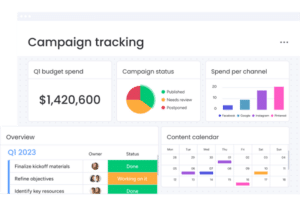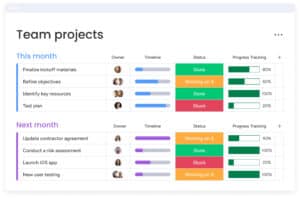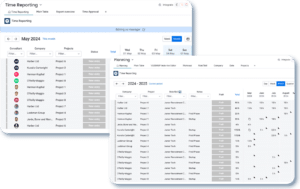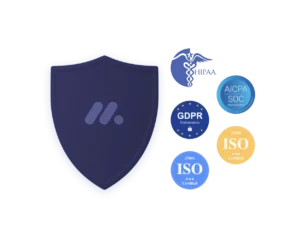Introduction
In today’s digitally driven marketplace, email stands as a cornerstone of effective communication and marketing strategies. But it’s not just about sending out mass emails and hoping for the best. The real question is, how can we harness the true potential of email campaigns to drive engagement and sales? This is where understanding how to optimize email marketing for higher conversion rates becomes crucial.
Email marketing, when executed with precision and creativity, can yield astonishing results. It’s a blend of art and science, requiring a deep understanding of your audience, the finesse of crafting compelling messages, and the analytical ability to track and enhance performance. With this blog post, we aim to demystify the process of optimizing your email marketing strategy for higher conversion rates. Whether you’re a seasoned marketer or just starting, you’ll find valuable insights and actionable strategies that can transform your email marketing efforts.
Our journey through this blog post will take us through various facets of email marketing optimization. From crafting personalized content that resonates with your audience to leveraging advanced tools and techniques, we’ll explore how each element plays a pivotal role in boosting your email conversion rates. So, if you’re looking to elevate your email marketing game and achieve better results, you’re in the right place. Let’s dive into the world of optimized email marketing and unlock the secrets to achieving higher conversion rates!
Understanding Email Marketing Conversion Rates
In the quest to learn how to optimize email marketing for higher conversion rates, the first step is to understand what email marketing conversion rates really mean. This metric is the compass that guides your email marketing strategy, showing how effectively your emails are translating into desired actions. Be it making a purchase, signing up for a webinar, or downloading a resource.
Defining Conversion Rates in Email Marketing
At its core, a conversion rate in email marketing is the percentage of recipients who complete a desired action as a result of your email. This could range from clicking a link to completing a purchase. It’s a direct indicator of your email’s effectiveness in compelling your audience to take action. High conversion rates mean your emails resonate well with your audience. Low rates on the other hand may signal a need for strategy adjustments.
Industry Benchmarks for Email Conversion Rates
It’s essential to contextualize your conversion rates within industry benchmarks. These benchmarks vary across industries and provide a yardstick against which you can measure your success. For instance, a conversion rate considered high in the retail sector might be different from what is expected in the B2B technology space. Knowing these benchmarks can help you set realistic goals and strategies for how to optimize email marketing for higher conversion rates.
Understanding your email marketing conversion rates is more than just a number. It’s about comprehending the health and effectiveness of your email campaigns. This understanding is crucial as you navigate through the intricacies of email marketing and strive to enhance your strategies for better engagement and conversion. As we delve deeper into this blog post, keep in mind that each strategy and tip is aimed at boosting these vital metrics, paving the way for your email marketing success.
Crafting Compelling Email Content
A critical element in learning how to optimize email marketing for higher conversion rates is the art of crafting content that captivates and compels. The right content can make the difference between an email that gets ignored and one that drives action. Let’s explore how you can create email content that not only engages your audience but also encourages them to take the desired actions.
The Power of Personalization
Personalization is the heartbeat of successful email marketing. In a world where inboxes are flooded daily, personalized emails stand out. By using recipient’s names, referencing their past interactions, or tailoring content to their interests, you significantly increase the likelihood of engagement and conversion. Personalized emails show your audience that they are more than just a number, fostering a sense of connection and value.
Creating Clear and Compelling Calls to Action (CTAs)
Your call to action (CTA) is your direct line to higher conversion rates. A compelling CTA is clear, concise, and tells the reader exactly what you want them to do next – whether it’s to shop now, learn more, or subscribe. The key is to make your CTAs irresistible, using action-oriented language, contrasting colours for visibility, and positioning them strategically within your email. Remember, a well-crafted CTA can be the tipping point that turns a reader into a customer.
Crafting compelling email content is an essential step in the journey of optimizing email marketing for higher conversion rates. By focusing on personalization and effective CTAs, you create emails that not only capture attention but also drive action. As we proceed, we will delve into more strategies and tips that will help elevate your email content and, in turn, your conversion rates.
Omnitas Newsletter
Sign up for our monthly newsletter to stay up-to-date on our latest blog articles, videos and events!
Thank you!
You have successfully joined our subscriber list.
Leveraging Email Design for Better Conversion
As we explore how to optimize email marketing for higher conversion rates, it becomes clear that the design of your email plays a pivotal role. A well-designed email not only grabs attention but also guides the reader through the content towards taking action. Let’s dive into how strategic design choices can significantly impact your email marketing conversion rates.
Importance of Responsive Design
In an era where emails are frequently read on a variety of devices, from desktops to smartphones, responsive design is non-negotiable. Emails must look good and function well on any screen size. Responsive design ensures that your emails are easily readable and navigable, regardless of the device used. This adaptability not only improves user experience but also boosts the likelihood of conversions, as a seamless experience is key in persuading recipients to take action.
Visual Appeal and Readability
An email that is a visual delight can engage the reader more effectively. The use of colours, images, and fonts needs to be strategic. Colours can evoke emotions and highlight key sections, while high-quality images can increase appeal and engagement. Moreover, the font choice and size should enhance readability. Balancing these elements is crucial – the goal is to create an aesthetically pleasing email that is also easy to read and navigate. Remember, an email that is visually appealing and easy to read is more likely to keep the reader engaged and encourage them to respond to your call to action.
In the journey of learning how to optimize email marketing for higher conversion rates, leveraging the power of design is a vital step. Responsive design and visual appeal are not just about aesthetics. They are tools that can significantly enhance the effectiveness of your emails. By focusing on these aspects, you can create emails that catch the eye. Additionally, they smoothly lead the reader towards conversion.
Segmenting Your Audience for Targeted Campaigns
A key strategy in understanding how to optimize email marketing for higher conversion rates is audience segmentation. Segmenting your email list allows you to send more targeted, relevant, and personalized communications. This targeted approach not only enhances the user experience but also significantly boosts the likelihood of conversions. Let’s explore how effective segmentation can transform your email marketing campaigns.
Benefits of Audience Segmentation
Audience segmentation involves dividing your email list into smaller, more specific groups based on certain criteria like demographics, purchase history, or engagement level. This enables you to tailor your messaging to resonate with each specific group. For instance, sending a promotional offer for winter wear to customers located in colder regions can yield better results than a generic nationwide campaign. Segmented campaigns often see higher open rates, click-through rates, and, importantly, conversion rates as they are more relevant to the recipient’s needs and interests.
Techniques for Effective Segmentation
Effective segmentation requires a good understanding of your audience. You can segment your audience based on various factors such as:
- Demographic data (age, gender, location, etc.)
- Behavioural data (purchase history, website interactions)
- Engagement level (frequency of email opens and clicks)
- Customer journey stage (new subscribers, regular customers, lapsed customers)
By using these segmentation techniques, you can create emails that are highly relevant and engaging to each segment of your audience. For instance, sending a special offer to customers who haven’t made a purchase recently can rekindle their interest in your brand.
In the realm of email marketing, knowing how to optimize email marketing for higher conversion rates is crucial, and audience segmentation is a powerful tool for achieving this goal. By sending the right message to the right people at the right time, you significantly increase the chances of your emails driving meaningful actions.
Analyzing and Optimizing Email Performance
A fundamental aspect of learning how to optimize email marketing for higher conversion rates lies in the continuous analysis and optimization of your email campaigns. Tracking and interpreting performance metrics not only provides insights into what works and what doesn’t but also opens up opportunities for refinement and improvement. Let’s delve into how analyzing and optimizing email performance can elevate your conversion rates.
Key Metrics to Track
Success in email marketing is not just about sending emails; it’s about understanding how those emails perform. Key metrics that you should track include:
- Open Rate: The percentage of recipients who opened your email. This metric gives you an idea of how effective your subject line is.
- Click-Through Rate (CTR): The percentage of recipients who clicked on at least one link in your email. A high CTR indicates that your content is relevant and engaging.
- Conversion Rate: The percentage of recipients who completed a desired action, such as making a purchase or signing up for a webinar. This is your ultimate goal and a direct indicator of your email marketing effectiveness.
- Bounce Rate: The percentage of emails that could not be delivered. Keeping track of this helps maintain a healthy email list.
A/B Testing for Continuous Improvement
A/B testing, or split testing, is a powerful tool in optimizing your email marketing campaigns. It involves sending two variations of an email to different segments of your audience to see which performs better. You can test various elements like subject lines, email content, layout, CTA buttons, and sending times. By systematically testing and learning from the results, you can make data-driven decisions that enhance the effectiveness of your campaigns.
In the journey of understanding how to optimize email marketing for higher conversion rates, analyzing and optimizing your email performance is a continuous and crucial process. Regularly tracking key metrics and employing A/B testing are essential practices that help you refine your strategies, leading to more effective and successful email marketing campaigns.

Integrating Email with Other Marketing Channels
As you delve deeper into how to optimize email marketing for higher conversion rates, it’s essential to recognize the power of integration. Email marketing, while powerful on its own, can achieve even greater effectiveness when strategically combined with other marketing channels. This integration creates a cohesive and comprehensive marketing strategy, amplifying your overall impact. Let’s explore how integrating email with other channels can boost your conversion rates.
The Role of Email in a Multi-Channel Strategy
Email marketing should not exist in a silo. Integrating it with other marketing channels like social media, content marketing, and digital advertising can create a more unified and compelling customer journey. For example, you can use social media to attract subscribers to your email list or use email campaigns to drive traffic to your latest blog posts or social media content. This holistic approach ensures that your brand message is consistent across all platforms, reinforcing your marketing efforts and boosting the likelihood of conversion.
Examples of Successful Email and Multi-Channel Campaigns
Successful integration often involves using each channel’s strengths to complement the others. For instance, a social media campaign could generate initial interest and awareness, while follow-up emails can nurture that interest into concrete actions, like purchases or sign-ups. Highlighting real-world examples, where brands have successfully used email in conjunction with other channels, can provide practical insights and inspiration for your own strategies.
In mastering how to optimize email marketing for higher conversion rates, the integration of email with other marketing channels is a critical factor. This approach not only broadens your reach but also creates multiple touchpoints with your audience, increasing the opportunities for engagement and conversion. By leveraging the strengths of each channel in harmony, you can create a more dynamic and effective marketing strategy.
Advanced Techniques and Tools for Email Marketing Optimization
In our exploration of how to optimize email marketing for higher conversion rates, it’s vital to consider the advanced techniques and tools that can take your campaigns to the next level. These innovations not only streamline your processes but also provide deeper insights and greater personalization capabilities, all of which are key to boosting conversion rates. Let’s delve into some of these cutting-edge approaches and tools.
Automation and AI in Email Marketing
Email automation has revolutionized the way marketers approach email campaigns. Tools that offer automation allow for the scheduling and sending of emails based on specific triggers or actions taken by the user, ensuring timely and relevant communication. Additionally, artificial intelligence (AI) in email marketing is a game-changer. AI can help with predictive analysis, segmenting audiences more effectively, optimizing send times, and even personalizing email content at scale. By leveraging these technologies, you can create more efficient, effective, and personalized email marketing campaigns.
Exploring Email Marketing Platforms
A plethora of email marketing platforms exist, each with its own set of features and benefits. Platforms like Mailchimp, Constant Contact, and others offer a range of functionalities from basic email creation and sending to advanced features like segmentation, automation, and analytics. Choosing the right platform depends on your specific needs, such as the size of your email list, the level of customization you require, and your budget. These tools aid in the creation and distribution of your emails. They also provide valuable insights into their performance, helping you to continuously refine and optimize your strategy.
As you master how to optimize email marketing for higher conversion rates, embracing advanced techniques and tools becomes essential. Automation, AI, and the right choice of email marketing platform can provide you with the edge needed to create more impactful and successful email campaigns. With these tools at your disposal, you are well-equipped to craft emails that resonate with your audience and drive conversions. Ultimately, this enhances your overall marketing strategy.
Conclusion
Throughout this comprehensive guide on how to optimize email marketing for higher conversion rates, we’ve explored a range of strategies and insights. From crafting compelling content and leveraging email design, to segmenting your audience and integrating email with other marketing channels, each element plays a critical role in enhancing the effectiveness of your email marketing efforts. The use of advanced techniques and tools further empowers your campaigns. This enables you to reach your audience in more personalized and impactful ways.
Email marketing is a dynamic and ever-evolving field. The key to success lies in continuous learning, testing, and adapting. By applying the strategies discussed in this blog post, you’re well on your way to elevating your email marketing campaigns and achieving higher conversion rates. Remember, the ultimate goal is to connect with your audience in a meaningful way, providing value that resonates and encourages engagement.
If you found these insights helpful and wish to stay updated with the latest trends and strategies in email marketing and other digital marketing realms, we invite you to subscribe to our monthly newsletter. Our newsletter is packed with valuable content, expert tips, and the latest industry updates to help you stay ahead in your marketing endeavours.


